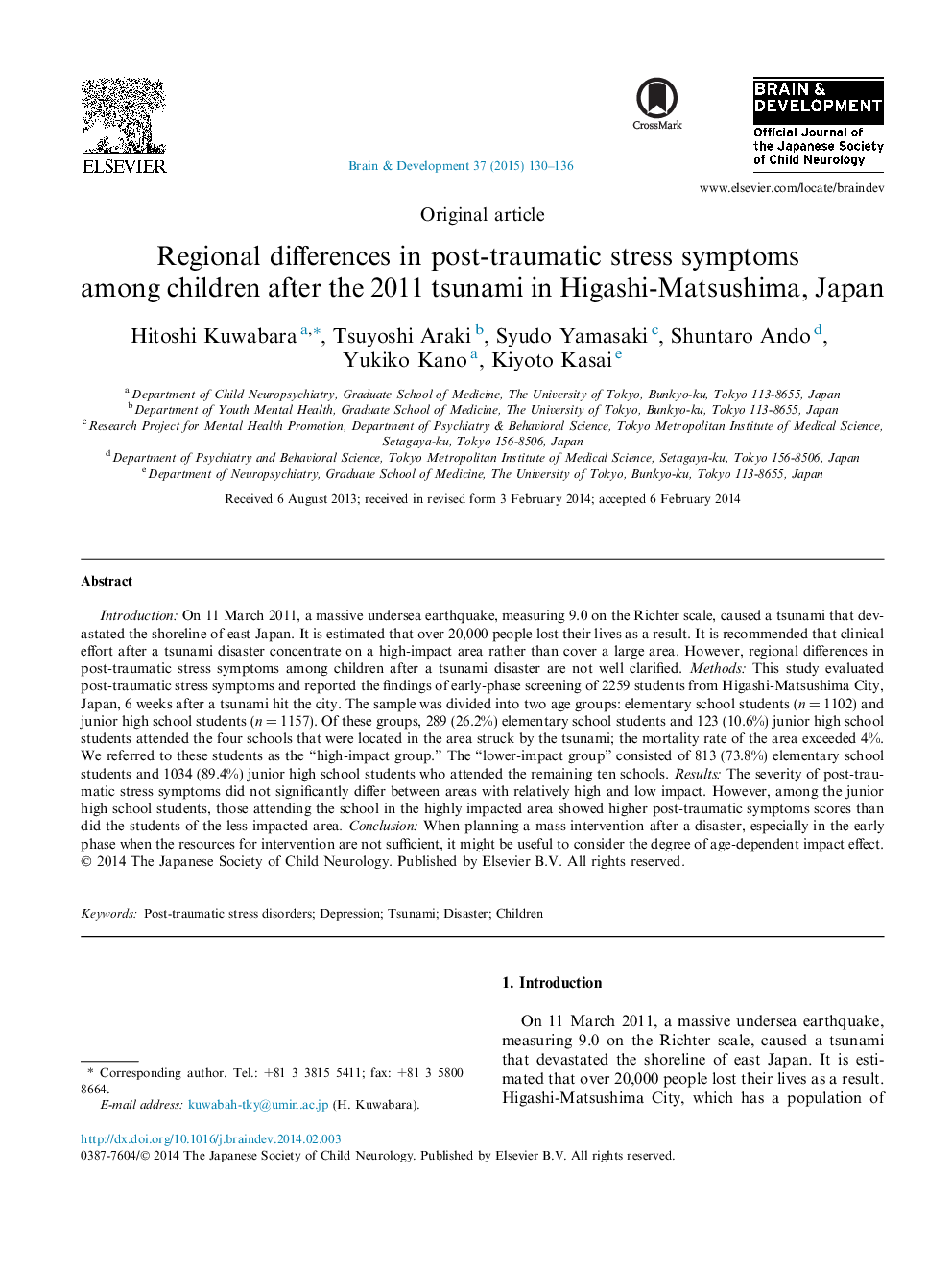| کد مقاله | کد نشریه | سال انتشار | مقاله انگلیسی | نسخه تمام متن |
|---|---|---|---|---|
| 3036692 | 1184381 | 2015 | 7 صفحه PDF | دانلود رایگان |

Introduction: On 11 March 2011, a massive undersea earthquake, measuring 9.0 on the Richter scale, caused a tsunami that devastated the shoreline of east Japan. It is estimated that over 20,000 people lost their lives as a result. It is recommended that clinical effort after a tsunami disaster concentrate on a high-impact area rather than cover a large area. However, regional differences in post-traumatic stress symptoms among children after a tsunami disaster are not well clarified. Methods: This study evaluated post-traumatic stress symptoms and reported the findings of early-phase screening of 2259 students from Higashi-Matsushima City, Japan, 6 weeks after a tsunami hit the city. The sample was divided into two age groups: elementary school students (n = 1102) and junior high school students (n = 1157). Of these groups, 289 (26.2%) elementary school students and 123 (10.6%) junior high school students attended the four schools that were located in the area struck by the tsunami; the mortality rate of the area exceeded 4%. We referred to these students as the “high-impact group.” The “lower-impact group” consisted of 813 (73.8%) elementary school students and 1034 (89.4%) junior high school students who attended the remaining ten schools. Results: The severity of post-traumatic stress symptoms did not significantly differ between areas with relatively high and low impact. However, among the junior high school students, those attending the school in the highly impacted area showed higher post-traumatic symptoms scores than did the students of the less-impacted area. Conclusion: When planning a mass intervention after a disaster, especially in the early phase when the resources for intervention are not sufficient, it might be useful to consider the degree of age-dependent impact effect.
Journal: Brain and Development - Volume 37, Issue 1, January 2015, Pages 130–136